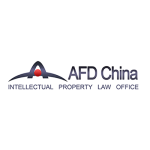Original equipment manufacturers (OEMs) manufacture goods in China with foreign trademarks labelled under the instruction of overseas parties. The overseas parties then pay the manufacturing fees and import all the finished goods into a foreign market for sale.
The use of OEMs is common in international commerce. However, it has caused many disputes and conflicts between foreign trademarks and registered trademarks in China.
The issues with OEM-related trademark infringement have attracted both domestic and international attention. Despite this, since unified trial standard or adjudication rules have not yet been formed in the judicial practice, the judgments of local courts may vary even where the findings of fact are the same.
The examination of such cases tends to focus on the following aspects: whether the OEM processing constitutes a trademark use that identifies the origin of goods, whether it is likely to cause confusion, whether the manufacturer has exercised a reasonable duty of care, whether it causes substantial damage to the domestic trademark registrant, and the territorial protection of trademark rights. These points were either individually or jointly reflected in specific cases and influenced the final judgments.
There are various elements involved in OEM activities, such as Chinese domestic trademark registrants, overseas trademark registrants, domestic manufacturers, and registered trademarks that are protected in different territories.
This article analyses the territorial protection of trademark rights in OEM-related activities, particularly in combination with prior cases and other situations that may exist in practice. It aims to offer some insights into protecting the rights and interests of trademark registrants through the flexible application of the principle of territorial protection.
Territoriality of trademarks in OEM disputes
The development of the representation of territoriality in OEM disputes in China can be seen in several significant judgments of the Supreme People’s Court (SPC) in the past few years.
2014 Minti Zi Judgment No. 38 (PRETUL trademark case),
Tupeheamietass is a Mexican company and the owner of the registered trademark for the trademark Pretul and oval device in Mexico. The mark was registered to be used on goods in class 6 (padlocks). Yahuan, a manufacturer based in Zhejiang Province, was authorised by Tupeheamietass to manufacture the padlocks with the Pretul mark labelled. Both parties agreed that all products would be sold back to Mexico.
Meanwhile, Focker Security Products International Limited had the exclusive right to the oval mark Pretul in China, which was also registered for padlocks in class 6. After hearing the case, the SPC ruled that the concerned OEM processing did not constitute trademark infringement.
2016 Min Zai Judgment No. 339 (Dongfeng trademark case)
The Indonesian company Ptadiperkasabuana (PTADI) registered the Dongfeng trademark in Indonesia for diesel engines and other products. PTADI authorised Jiangsu Changjia to manufacture diesel engines and components thereof with the mark Dongfeng labelled. Both parties agreed that the products would be completely exported to Indonesia for sale.
However, Shanghai Diesel Engine had the exclusive registration for the Dongfeng mark in China, designating diesel engine products in class 7. Moreover, this mark was recognised as a well-known trademark in China in 2000. After hearing the case, the SPC ruled that the concerned OEM processing did not constitute trademark infringement.
The facts of the two cases are largely similar. After retrial, the SPC held that the OEM processing in both cases did not constitute trademark infringement on similar grounds. The grounds included: (1) the act of a Chinese manufacturer affixing a foreign trademark to the products it manufactured as entrusted by the foreign owner of the foreign trademark did not have the function of identifying the source of the goods in China, and thus did not constitute a use of the trademark; and (2) all manufactured products were exported overseas without entering into circulation in the Chinese market, and there was no likelihood of confusion or misidentification of the source of the goods by the relevant public.
From the decisions of other courts in that period, it is clear that when analysing whether the OEM processing constituted trademark infringement, most of the courts would consider the territoriality of trademarks, i.e. the determination of the likelihood of confusion caused by the OEM processing (such as affixation of the foreign trademarks or exportation of the manufactured products) was limited to the market circulation within the territory of China. Thus OEM processing in which the final products did not enter the Chinese market generally did not constitute trademark infringement.
The SPC’s judgment of non-infringement in these OEM cases indicated that OEM processing did not cause a likelihood of confusion regarding the source of goods in China and was therefore an exception to trademark infringement. But two years later, the SPC gave a new decision with new reasons in the judgment on the Honda trademark in September 2019.
2019 Min Zai Judgment No. 138 (Honda trademark case), SPC, September 2019
A Burmese company Meihua entrusted Chongqing Hengsheng Group to manufacture and use the Myanmar-registered trademark Hondakit on motorcycle parts. Both parties agreed that the finished goods would be completely exported to Myanmar for sale. Honda Motor has the exclusive right to use the Honda trademark in China on motorcycles.
After the first and second instances, in a retrial of the case the SPC finally determined that this OEM processing constituted trademark infringement.
In its judgment, the SPC ruled that “use of a trademark is an objective act, which often comprises multiple steps, such as physical affixation, market circulation and so on. Whether it constitutes a use of trademark under the Trademark Law should be interpreted as a whole in accordance with the Law, and should not be determined by segmenting such act and only looking at one particular step”, and “the relevant public should also include, in addition to the consumers of the accused infringing goods, the operators closely related to the marketing of the accused infringing goods.
|
|
“OEMS has caused many disputes and conflicts between foreign trademarks and registered trademarks in China.” |
|
|
For example, the operators engaged in the transportation of the accused infringing goods are also likely to come into contact with the goods. Moreover, with the development of e-commerce and the internet, even if the accused infringing goods are exported abroad, there is still a likelihood of the goods coming back to the domestic market. At the same time, China’s growing economy enables a large number of Chinese consumers to travel and consume abroad, thus increasing the likelihood of contact and confusion about the ‘OEM goods’.”
This judgment shows that when reviewing the case, the SPC did not deny the foreign trademark’s impact on identifying the source of the goods merely on the grounds that the concerned OEM and mark labelling only took place inside the Chinese manufacturer and the goods did not enter the Chinese market. It also did not deny the likelihood of confusion merely on the grounds that the OEM goods were only sold overseas.
As to whether the use of a foreign trademark authorised by an overseas entrusting party can be used as a defence for non-infringement, the SPC also emphasised the territoriality of trademark rights, holding that “as an intellectual property right, a trademark right is territorial. A trademark not registered in China, regardless of its registration in a foreign country, does not have the exclusive right as a registered mark in China. Correspondingly, the so-called ‘authorised use of a trademark’ obtained by civil subjects in China is not a legitimate trademark right under China’s trademark law, and therefore cannot be used as a defence of non-infringement of trademark rights.”
The judgment in the Honda trademark case shows that, when reviewing this OEM case, the SPC applied a different set of rules to the territorial protection of trademark rights from those in the previous cases. Specifically, the SPC not only blurred the impact of trademark territoriality on identifying the source of goods and causing a likelihood of confusion, but also emphasised that the authorised use of foreign trademarks cannot be automatically protected in China in view of trademark territoriality. This strengthened the protection of the owners of Chinese trademark registrations.
Flexible application of trademark territoriality
OEM processing generally involves three parties: the registrant of a foreign trademark, the manufacturer in China, and the registrant of a Chinese trademark.
As mentioned above, OEM processing involves a number of case elements. It is possible to analyse how to use the territoriality of trademarks reasonably to resolve trademark infringement disputes in OEM cases through some hypothetical scenarios.
Scenario 1: Trademark is properly registered in China
As ruled in the SPC’s judgment in the Honda trademark case, the authorised use by an overseas entrusting party cannot be used as a defence against trademark infringement. The so-called ‘authorised use’ of a foreign registered trademark obtained by a domestic manufacturer is not a legitimate trademark right under China’s trademark law, nor can it successfully defend the non-infringement of the OEM processing.
The most direct embodiments of the territoriality of trademarks lie in protecting the rights of trademarks registered within the territory of China and prohibiting trademark infringement (including the act of affixing foreign trademarks to OEM goods) within the territory of China according to the law.
Scenario 2: Trademark is properly registered in China and has gained a certain reputation
The protection of intellectual property in China has increasingly been reinforced, and punitive compensation rules have been comprehensively established against the infringement of intellectual property.
In terms of OEM cases, when a domestic trademark properly registered has gained a certain reputation, other manufacturers, as competitors, have a duty to take reasonable care. In one aspect, having fulfilled the duty to take reasonable care can become an effective defence of non-infringement, which may exempt or mitigate the compensation liability of a bona fide manufacturer.
More importantly, strengthening the impact of the territoriality of trademarks, and requiring domestic manufacturers to fulfil the duty to take reasonable care, can indirectly regulate the squatting of Chinese trademarks by overseas entrusting parties, further prevent trademark infringement in China caused by OEMs and urge all concerned parties to abide by the principle of good faith stipulated in the Trademark Law.
Scenario 3: Trademark registered in China by an unfair means
If a trademark is registered in China in bad faith, then the foundation of the right to seek protection is inherently flawed. In this case, attention should be paid to the protection of domestic OEMs, international traders and genuine trademark registrants even when the genuine trademark owners are not Chinese entities and their trademarks are not protected in China.
Likewise, if a domestic trademark registrant causes damage to a domestic OEM through malicious litigation, it will be liable for compensation.
Importance of trademark registration
With the deepening of global economic integration, the Chinese market gains a closer connection with the global market. In order to protect their trademark rights, it is necessary for entities from various countries to register their trademarks in China.
The change of attitude of the SPC in OEM cases shows that where foreign entities do not intend to enter the Chinese market for the time being due to trademark territoriality then registering trademarks in China is the only way to receive proper protection for their rights if they face trademark infringement from competitors associated with OEMs in China.
Click here to read all the chapters from Managing IP's China IP Special Focus 2022

Xue Li
Counsel
AFD China Intellectual Property Law Office
T: +86 10 8273 0790
Xue Li has been working as a trademark attorney with AFD China Intellectual Property Law Office since graduating from Dalian Maritime University with a master’s degree in constitutional and administrative law in July 2011.
Xue passed the Chinese Bar in 2010 and obtained her Chinese law licence in July 2012. She has significant experience in trademark practice, IP enforcement and litigation.

Jingjing Wu
Manager
AFD China Intellectual Property Law Office
T: +86 10 8273 0790
Jingjing Wu is a manager at AFD China Intellectual Property Law Office. She specialises in patent prosecution, trademark prosecution, protection and enforcement, other IP protection related to domain name, trade secret, anti-unfair competition and copyright, and IP administrative lawsuits and litigation.
Jingjing is a member of the All China Patent Attorneys Association and a patent litigation attorney, admitted before the Supreme People’s Court of China in 2013.
Jingjing graduated from Tianjing University with bachelor degrees in chemical engineering and LLB, and began practicing IP law in 2002.

Mingzhao Yang
President
AFD China Intellectual Property Law Office
T: +86 10 8273 0790
Mingzhao Yang is president of AFD China Intellectual Property Law Office. He leads the firm’s strategic management and operation teams and focuses on IP matters including prosecution, post-grant proceedings, dispute solutions, litigation, and counselling.
Mingzhao is a patent attorney registered before the CNIPA and patent litigation attorney registered before the SPC. He obtained his bachelor of engineering degree from Beijing University of Technology.














